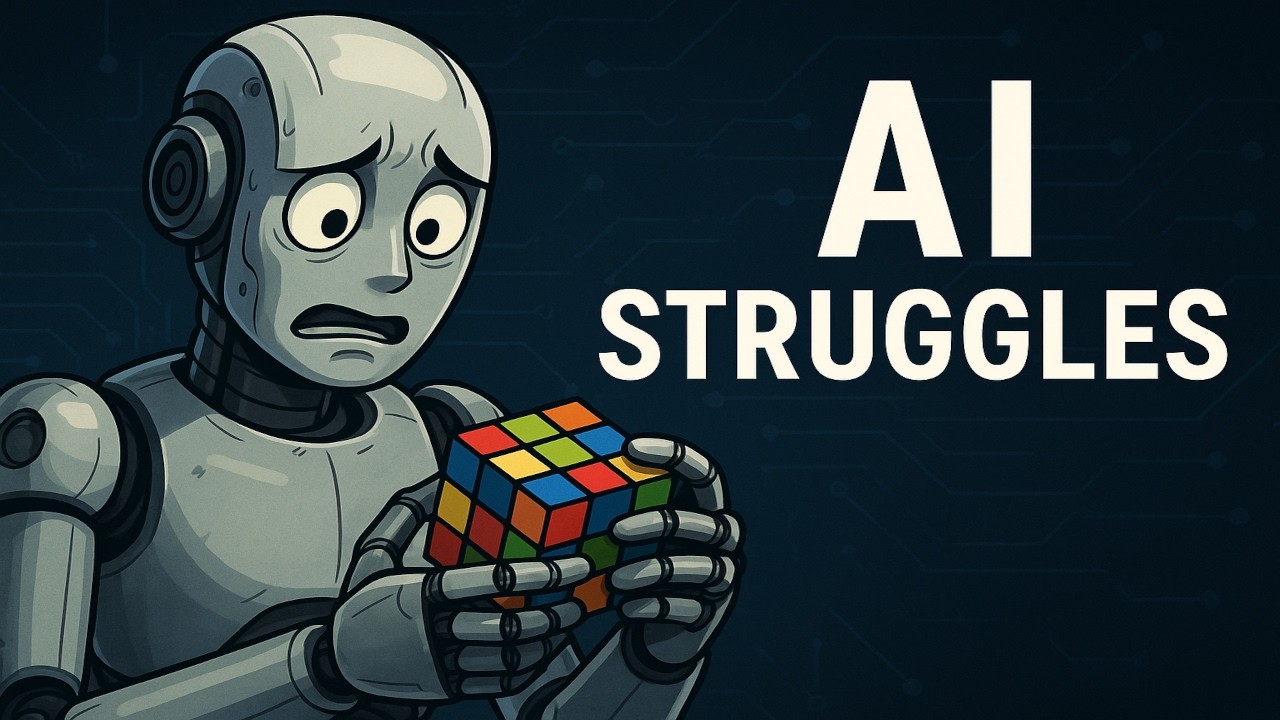The video demonstrates that current AI models still struggle with complex visual and spatial reasoning tasks, such as accurately determining the dimensions of a 3D shape from 2D images, highlighting a significant challenge in AI development. While some models show promising improvements in spatial awareness, the creator emphasizes the need for new benchmarks and approaches to enhance AI’s understanding of three-dimensional space, similar to how children learn to interpret visual diagrams.
The video explores the current limitations of artificial intelligence in solving visual and spatial reasoning tasks, using a Rubik’s cube-like puzzle as an example. The creator tested various leading AI models to see if they could determine the dimensions of a rectangular prism made up of smaller cubes. While humans can quickly identify the dimensions, most AI models struggled, often providing incorrect answers or taking a long time to think through the problem. This highlights that AI still lacks robust visual reasoning capabilities, especially when it comes to understanding three-dimensional space from two-dimensional images.
Different AI models were tested with varying degrees of success. Gemini initially guessed the shape as a 4x4x4 cube, which was incorrect given the actual dimensions of 3x4x5. Grock confidently stated it was a 5x5x5 cube and even attempted to calculate how many cubes were missing, but was clearly wrong. Claude was somewhat closer, estimating dimensions as 4x3x4, but still not accurate. The model 03 took several minutes to analyze and ultimately failed to produce a correct solution, indicating that even extended reasoning didn’t significantly improve performance on this visual task.
In contrast, the AI model 04 mini demonstrated much better performance, quickly identifying the bounding box as 5x4x3 and estimating that only seven small cubes were missing. This model’s rapid response suggests that some AI systems are beginning to develop better spatial awareness, although it still made minor errors in the exact dimensions. The more advanced 04 mini high was able to recognize the shape instantly without extensive processing, correctly identifying the dimensions as 5x4x3, though it slightly rotated the shape in its interpretation. When asked to calculate the missing cubes, it estimated five, which was close but not perfect.
The overall takeaway from these experiments is that current AI models are still limited in their ability to perform complex visual and spatial reasoning tasks. The creator emphasizes that visual reasoning, especially involving three-dimensional understanding from two-dimensional images, is a significant frontier for AI development. He suggests that this area might be more challenging than other tasks and could require new benchmarks and approaches to improve AI’s spatial comprehension. The experiment underscores the importance of developing AI systems capable of better visual reasoning, which is crucial for future advancements.
Finally, the creator reflects on the broader implications of this experiment, comparing it to teaching children spatial reasoning skills through visual diagrams like Lego instructions. Just as children need to learn how to interpret two-dimensional representations of three-dimensional objects, AI systems also need to develop this skill. He advocates for the creation of standardized visual reasoning benchmarks to push progress in this area, noting that such skills are fundamental for more advanced AI capabilities. Overall, the video highlights both the progress and the challenges in enabling AI to understand and manipulate three-dimensional space effectively.
